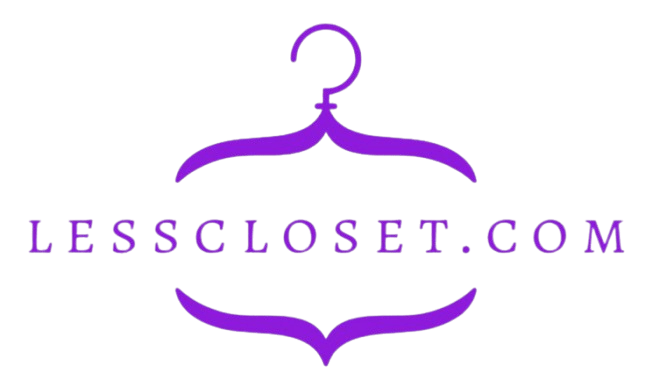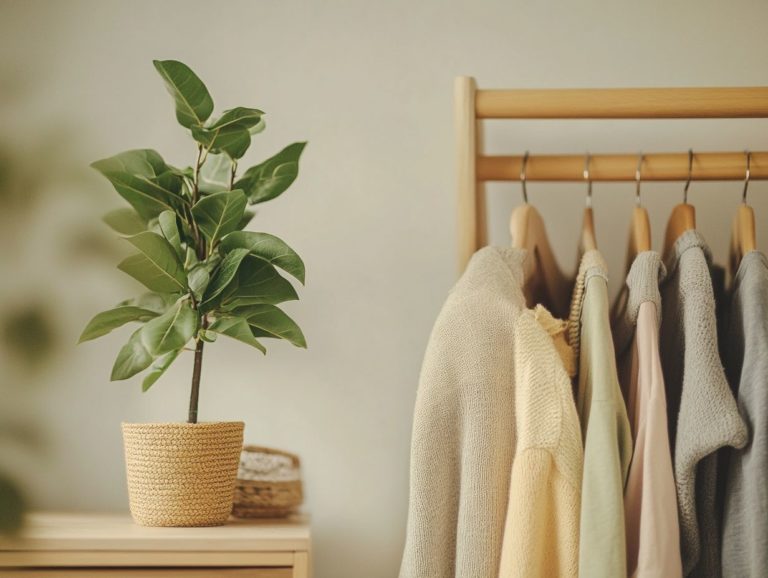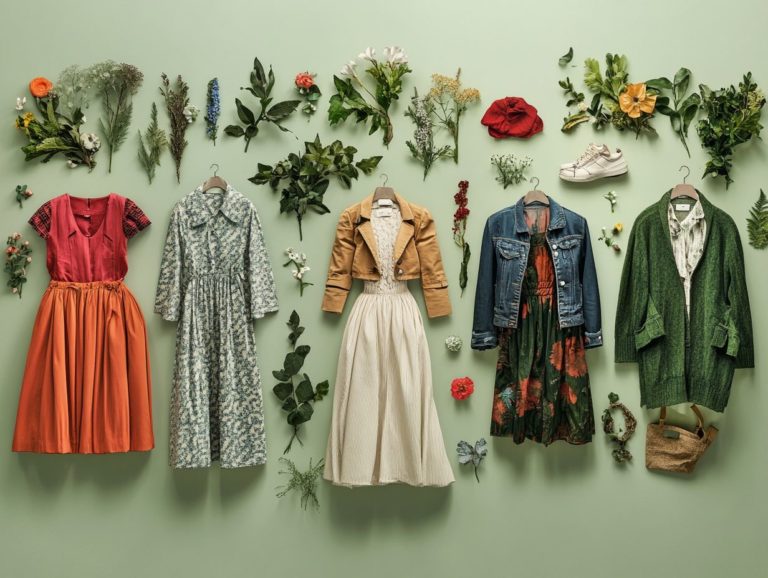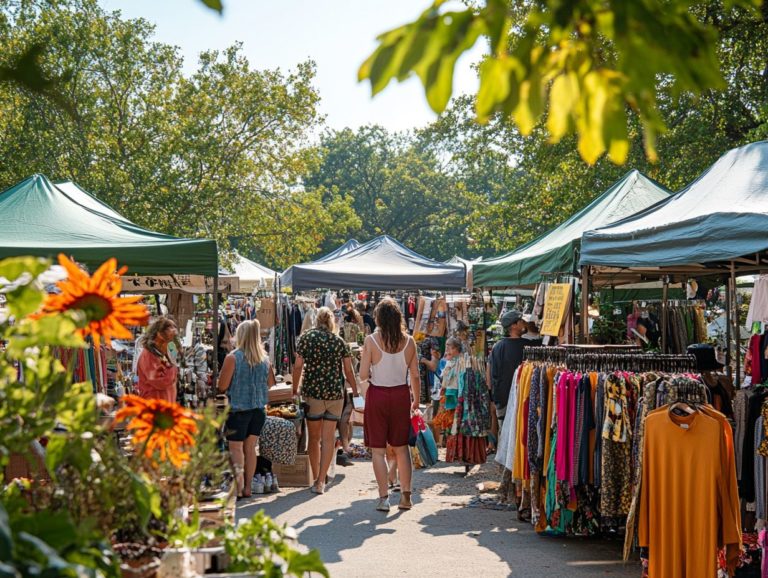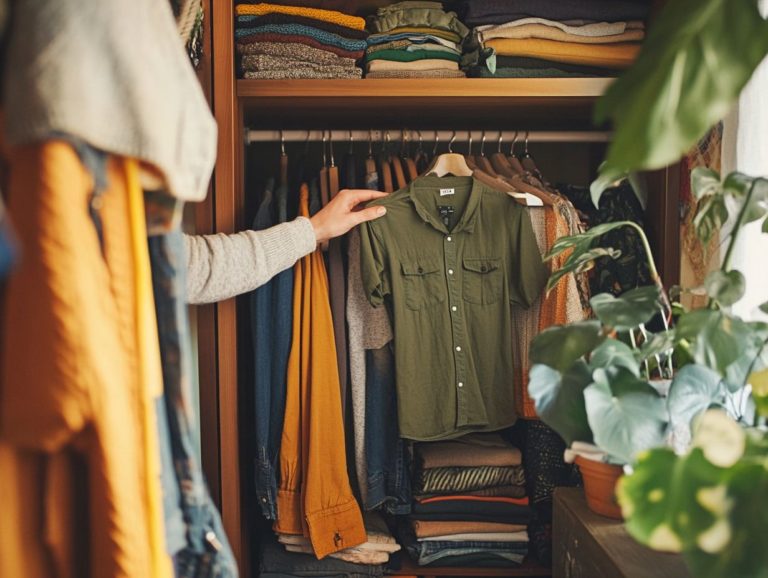5 Eco-Friendly Fashion Swaps for Your Closet
In a world where fast fashion reigns supreme, the journey toward eco-friendly choices can seem daunting. However, making small swaps in your wardrobe can yield significant positive impacts on the environment.
Here are five exciting steps you can take right now, from selecting natural fabrics to embracing minimalism. This article delves into the advantages of sustainable fashion, the drawbacks of fast fashion, and how both consumers and brands can play a role in fostering a greener planet.
Ready to transform your closet? Act now and explore the possibilities!
Contents
- Key Takeaways:
- 1. Swap Out Synthetic Fabrics for Natural Ones
- 2. Choose Sustainable and Ethically Made Brands
- 3. Opt for Second-Hand Clothing
- 4. Embrace Minimalism and Capsule Wardrobes
- 5. Invest in High-Quality and Timeless Pieces
- How Can Eco-Friendly Fashion Benefit the Environment?
- How Can Consumers Make More Sustainable Fashion Choices?
- What Are the Most Sustainable Fabrics?
- How Can Fashion Brands Become More Eco-Friendly?
- What Are Some Eco-Friendly Fashion Trends to Look Out For?
- Frequently Asked Questions
- What are 5 eco-friendly fashion swaps for my closet?
- How can I make my closet more environmentally friendly?
- Why should I switch to eco-friendly fashion?
- Where can I find eco-friendly fashion options?
- How can I incorporate eco-friendly fashion swaps in my daily routine?
- What are the benefits of incorporating eco-friendly fashion swaps into my closet?
Key Takeaways:

- Swap synthetic fabrics for natural, sustainable materials to reduce microplastic pollution and water waste.
- Choose ethically made brands with fair trade practices to support responsible production and workers’ rights.
- Opt for second-hand clothing to reduce textile waste and give pre-loved items a new life.
1. Swap Out Synthetic Fabrics for Natural Ones
In the world of sustainable fashion, your choice to swap out synthetic fabrics for natural ones can significantly reduce plastic pollution while supporting ethical labor and sustainable practices in the industry.
By opting for materials like organic cotton, linen, and hemp, you not only contribute to lowering greenhouse gas emissions but also promote better soil health and biodiversity. These biodegradable fibers break down naturally, unlike their synthetic counterparts, which can linger in landfills for decades. Choosing natural fibers helps reduce reliance on limited resources, fostering a healthier planet.
Embracing textile recycling further supports a circular economy, ensuring that valuable resources are reused rather than discarded. This approach minimizes waste and conserves energy. Ultimately, every conscious decision you make can help pave the way for a more sustainable future.
2. Choose Sustainable and Ethically Made Brands
Selecting sustainable and ethically made brands such as Patagonia, Everlane, and Reformation enables you to foster a fashion industry that values quality over quantity.
By championing transparent supply chains and prioritizing fair labor practices, these companies not only reduce their environmental impact but also uplift marginalized communities. Supporting BIPOC brands is especially meaningful, as it amplifies diverse voices and perspectives within the industry.
When you choose consciously, you play a crucial role in shifting toward equitable practices, ensuring that all stakeholders from artisans to laborers are valued appropriately. This collective effort can spark significant positive change, inspiring more brands to embrace sustainable and ethical practices.
3. Opt for Second-Hand Clothing
Opting for second-hand clothing through thrift shopping, vintage shops, and platforms like ThredUp and Poshmark not only champions sustainable fashion but also plays a vital role in textile recycling, minimizing the environmental impact of fast fashion brands.
Embracing pre-loved garments provides you with an affordable avenue to diversify your wardrobe, allowing you to express your unique style without straining your budget. Thrift shopping often unveils treasures that simply can t be found in traditional retail one-of-a-kind pieces that infuse character into any outfit.
To maximize your thrift shopping adventures, visit regularly, maintain an open mind, and exercise a bit of patience while hunting for those hidden gems. Exploring luxury consignment shops can significantly elevate your wardrobe, giving you the chance to invest in high-quality, designer items at a fraction of their original price.
Join the movement towards sustainable fashion and share your eco-friendly choices on social media! Together, we can inspire change.
4. Embrace Minimalism and Capsule Wardrobes
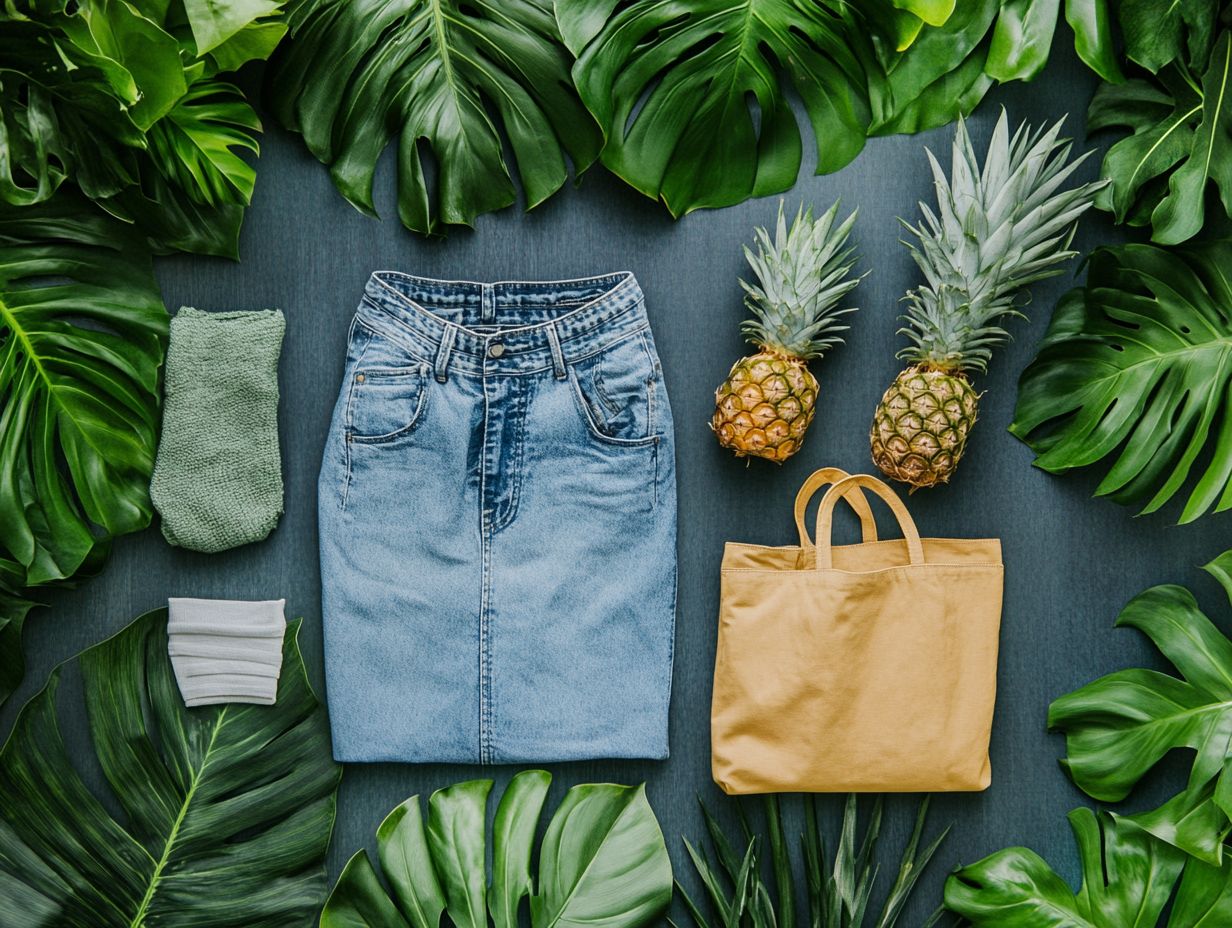
Embracing minimalism through a capsule wardrobe enables you to focus on versatile pieces that can be effortlessly mixed and matched. It creates a quality wardrobe that aligns with sustainable fashion principles. This also helps minimize waste.
This approach simplifies your daily choices and fosters a deeper connection with your personal style. You will gain a greater appreciation for what you already own. By consciously selecting each item based on its versatility and sustainability, you contribute significantly to reducing your carbon footprint.
Mindful laundry practices are essential in this journey; proper washing and care can greatly extend the life of your clothing. Implementing seasonal storage techniques is another smart move, helping to maintain the longevity of your garments and preventing rapid wear and tear.
By adopting these habits, you respect both your wardrobe and the planet.
5. Invest in High-Quality and Timeless Pieces
Choose high-quality, timeless pieces that elevate your style like denim pants and bamboo basics. This ensures that your fashion choices are sustainable while transcending fleeting trends.
This thoughtful approach not only elevates your personal style but also curbs the relentless cycle of fast fashion, which contributes significantly to environmental waste. When you prioritize durable garments, you actively diminish your reliance on cheap, disposable clothing.
Vintage classics and luxury consignment options further enrich your sustainable practices, providing unique, meticulously crafted items that often carry a story.
By opting for second-hand luxury, you not only champion recycling but also embrace your individuality. This choice is crucial for paving a sustainable future in fashion. Together, we can make a difference!
How Can Eco-Friendly Fashion Benefit the Environment?
Eco-friendly fashion is an excellent way for you to support the environment by reducing plastic pollution, promoting a circular economy, and advocating for sustainable practices that minimize waste and resource consumption.
When you choose eco-friendly materials like organic cotton, bamboo, and recycled textiles, you help eliminate harmful chemical usage. You play a vital role in supporting biodiversity as well. When you choose eco-friendly materials, you encourage local communities to join textile recycling initiatives, repurposing old garments into innovative creations.
This collaborative effort fosters a sense of community and significantly lowers the carbon footprint associated with production. As you make conscious choices, you become part of a movement that champions both environmental stewardship and social responsibility, ultimately crafting a healthier planet for future generations.
What Are the Negative Effects of Fast Fashion?
The negative effects of fast fashion lead to serious problems like plastic pollution, unethical labor practices, and the spread of microplastics in our environment. These issues pose a significant threat to the sustainability of the fashion industry.
This industry thrives on rapid production and consumption cycles, exploiting workers in low-paying jobs. It generates a staggering 92 million tons of waste annually, according to the UN. In stark contrast, sustainable alternatives offered by eco-conscious brands advocate for fair labor conditions and significantly mitigate environmental harm.
For instance, making the shift to a circular economy could reduce carbon emissions from fashion production by an impressive 44%, underscoring the urgent need for a change in consumer habits. By prioritizing ethical practices, you help address pressing challenges along with industry leaders.
How Can Consumers Make More Sustainable Fashion Choices?

You can make more sustainable fashion choices by engaging in practices such as a wardrobe cleanout, participating in clothing swaps, and honing your mending skills to extend the life of your garments.
By implementing these strategies, you reduce the environmental impact associated with fast fashion. You also build a better appreciation for your existing wardrobe.
Start by evaluating what you truly wear and need, which will lead to more thoughtful purchases in the future.
Joining local community groups for clothing swaps fosters connections and creativity while refreshing your style without spending a dime.
Learning basic sewing techniques gives you the power to repair rather than discard items, making a significant difference over time. These simple changes can transform your life and save the planet!
These mindful shifts contribute to a more eco-conscious lifestyle that benefits both you and the environment alike.
What Are the Most Sustainable Fabrics?
You ll find that some of the most sustainable fabrics include organic cotton, bamboo fiber, linen, and hemp. Each of these materials boasts biodegradable properties and a significantly smaller environmental footprint compared to conventional textiles.
Organic cotton is a standout, grown without synthetic pesticides and fertilizers, which contributes to healthier soil and thriving ecosystems.
Bamboo fiber grows rapidly without the need for fertilizers, making it highly renewable and a champion for biodiversity.
Linen, sourced from the flax plant, requires less water during production and creates minimal waste since nearly every part of the plant is utilized. And let s not forget hemp; it s exceptionally resilient, needing few resources while naturally enhancing soil health.
By choosing these fabrics, you’re not just investing in your wardrobe; you’re also championing sustainable fashion and helping to reduce the detrimental impacts of traditional textile production on our planet. Explore sustainable fabrics for your capsule wardrobe to make more eco-friendly choices.
How Can Fashion Brands Become More Eco-Friendly?
Fashion brands can elevate their eco-friendliness by embracing sustainable practices, ensuring ethical labor, and prioritizing sustainable sourcing that contributes to a circular economy a system where products are reused and recycled to minimize waste.
Take Patagonia as an example they ve made remarkable progress in environmental conservation by utilizing recycled materials and championing fair trade practices.
Stella McCartney exemplifies how luxury and sustainability can harmoniously coexist by focusing on cruelty-free designs and integrating eco-friendly materials.
Partnering with local organizations helps brands amplify awareness of their eco-friendly efforts. This approach fosters a culture of responsibility and stewardship in fashion, driving meaningful change from the grassroots level.
What Are Some Eco-Friendly Fashion Trends to Look Out For?
Emerging eco-friendly fashion trends invite you to explore clothing rental services, innovative mending skills workshops, and repurposing parties that transform community events into vibrant celebrations of sustainability.
These trends are not just reshaping how you approach your wardrobe; they re redefining your relationship with clothing itself.
By embracing rental services, you gain access to a diverse array of styles while minimizing waste a reflection of the growing consciousness surrounding environmental impact.
Engaging in workshops focused on mending and upcycling arms you with essential skills, enabling you to take charge of your fashion choices and prolong the life of your garments.
This sense of community cultivates creativity and encourages shared responsibility, illustrating how collective action can pave the way for a more sustainable future in the fashion industry.
Frequently Asked Questions
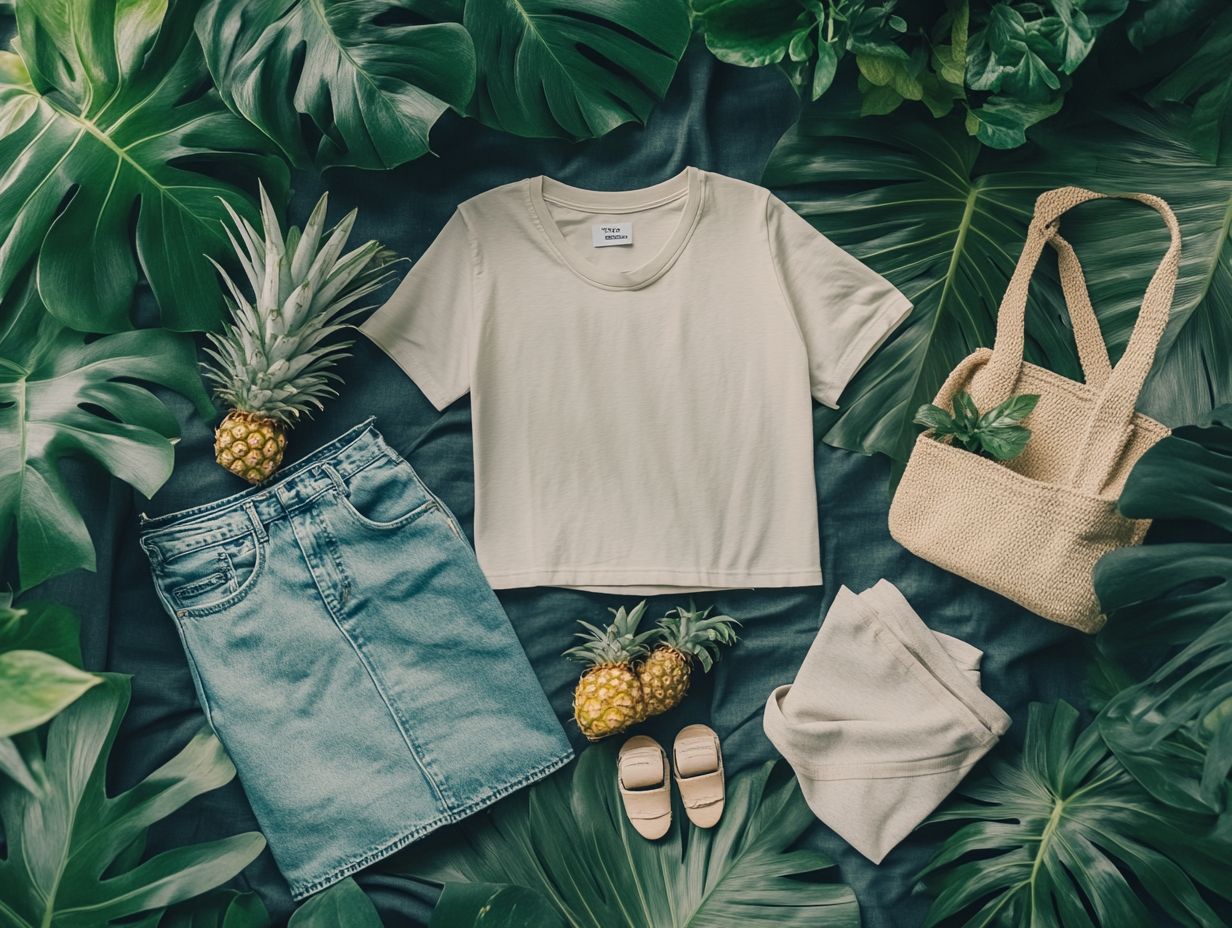
What are 5 eco-friendly fashion swaps for my closet?
1. Swap out fast fashion clothing for sustainable and ethically-made pieces.
2. Replace man-made fabrics with natural options like cotton, linen, or bamboo.
3. Trade in leather and fur for vegan alternatives like faux leather.
4. Opt for pre-loved or vintage clothing instead of buying new items.
5. Choose items from brands that focus on eco-friendly and ethical practices.
How can I make my closet more environmentally friendly?
1. Declutter your closet and donate or recycle items you no longer wear.
2. Invest in timeless and versatile pieces that can be worn for multiple seasons.
3. Repair and mend clothing instead of throwing them away.
4. Use eco-friendly laundry detergents and wash clothes in cold water.
5. Hang your clothes to dry instead of using a dryer.
Why should I switch to eco-friendly fashion?
1. Fast fashion contributes to pollution, waste, and unethical labor practices.
2. Choosing sustainable and ethically-made clothing supports the environment and workers.
3. Eco-friendly fashion can be just as stylish and on-trend as fast fashion.
4. Switch to eco-friendly fashion to lessen your carbon footprint and protect our planet!
5. It sets a good example for others and promotes conscious consumerism.
Where can I find eco-friendly fashion options?
1. Look for clothing made from sustainable and natural materials at local thrift stores or online consignment shops.
2. Do some research on eco-friendly and ethical fashion brands and shop from their websites.
3. Attend clothing swap events in your community.
4. Check out eco-friendly fashion websites and blogs for recommendations and reviews.
5. Support small and local businesses that prioritize eco-friendly practices.
How can I incorporate eco-friendly fashion swaps in my daily routine?
1. Start by making one small swap at a time, like choosing a vegan leather jacket over a real leather one.
2. Get creative and repurpose clothing items you already own.
3. Join friends for clothing swaps or participate in eco-friendly fashion communities online for inspiration.
4. Make a conscious effort to read labels and choose sustainable and ethical options when shopping.
5. Educate yourself and others about the importance of eco-friendly fashion and its impact.
What are the benefits of incorporating eco-friendly fashion swaps into my closet?
1. It reduces the negative impact of fast fashion on the environment and workers.
2. It promotes sustainable and ethical practices in the fashion industry.
3. It can save you money in the long run by investing in quality and timeless pieces.
4. You can express your personal style while being conscious of the environment.
5. Contributing to eco-friendly fashion helps pave the way for a sustainable and ethical future in the industry.
